Martin Bo Møller
Room impulse response prototyping using receiver distance estimations for high quality room equalisation algorithms
Sep 16, 2024



Abstract:Room equalisation aims to increase the quality of loudspeaker reproduction in reverberant environments, compensating for colouration caused by imperfect room reflections and frequency dependant loudspeaker directivity. A common technique in the field of room equalisation, is to invert a prototype Room Impulse Response (RIR). Rather than inverting a single RIR at the listening position, a prototype response is composed of several responses distributed around the listening area. This paper proposes a method of impulse response prototyping, using estimated receiver positions, to form a weighted average prototype response. A method of receiver distance estimation is described, supporting the implementation of the prototype RIR. The proposed prototyping method is compared to other methods by measuring their post equalisation spectral deviation at several positions in a simulated room.
Deep Sound Field Reconstruction in Real Rooms: Introducing the ISOBEL Sound Field Dataset
Feb 12, 2021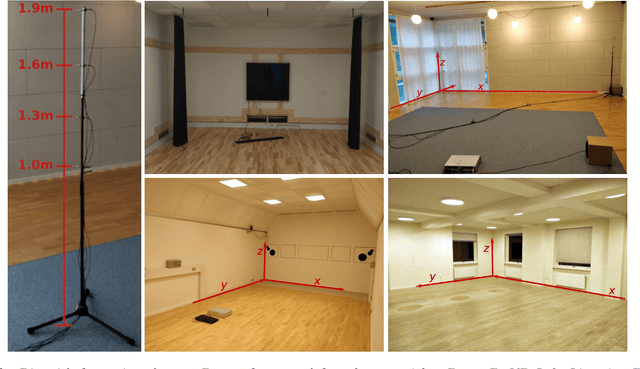
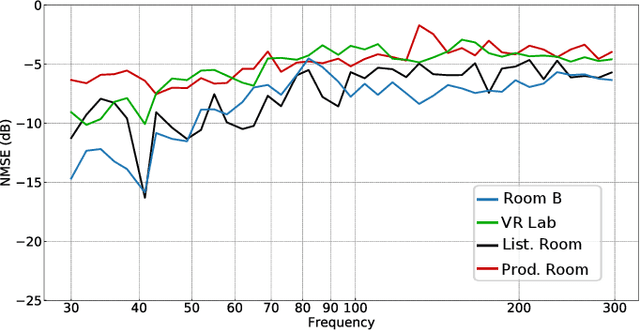
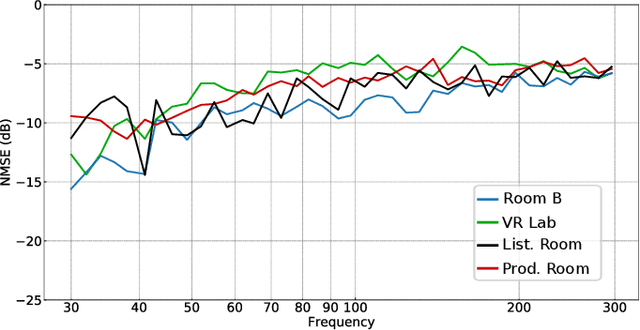

Abstract:Knowledge of loudspeaker responses are useful in a number of applications, where a sound system is located inside a room that alters the listening experience depending on position within the room. Acquisition of sound fields for sound sources located in reverberant rooms can be achieved through labor intensive measurements of impulse response functions covering the room, or alternatively by means of reconstruction methods which can potentially require significantly fewer measurements. This paper extends evaluations of sound field reconstruction at low frequencies by introducing a dataset with measurements from four real rooms. The ISOBEL Sound Field dataset is publicly available, and aims to bridge the gap between synthetic and real-world sound fields in rectangular rooms. Moreover, the paper advances on a recent deep learning-based method for sound field reconstruction using a very low number of microphones, and proposes an approach for modeling both magnitude and phase response in a U-Net-like neural network architecture. The complex-valued sound field reconstruction demonstrates that the estimated room transfer functions are of high enough accuracy to allow for personalized sound zones with contrast ratios comparable to ideal room transfer functions using 15 microphones below 150 Hz.
Sound field reconstruction in rooms: inpainting meets superresolution
Jan 30, 2020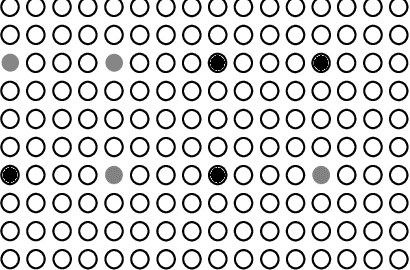
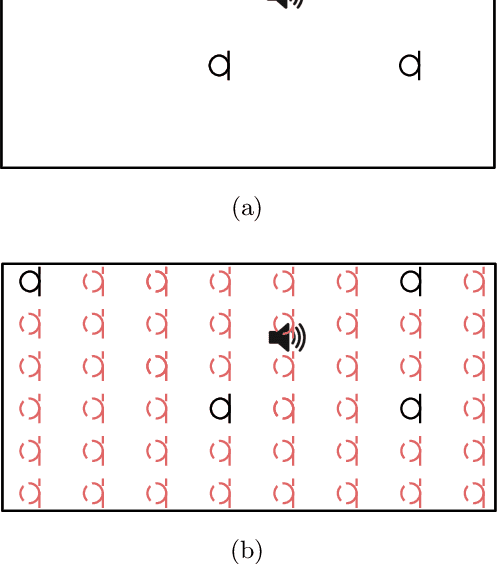
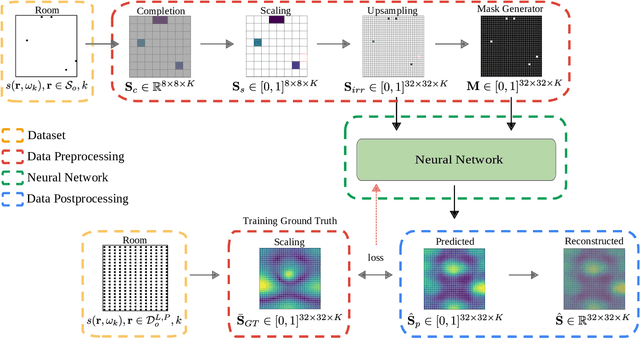
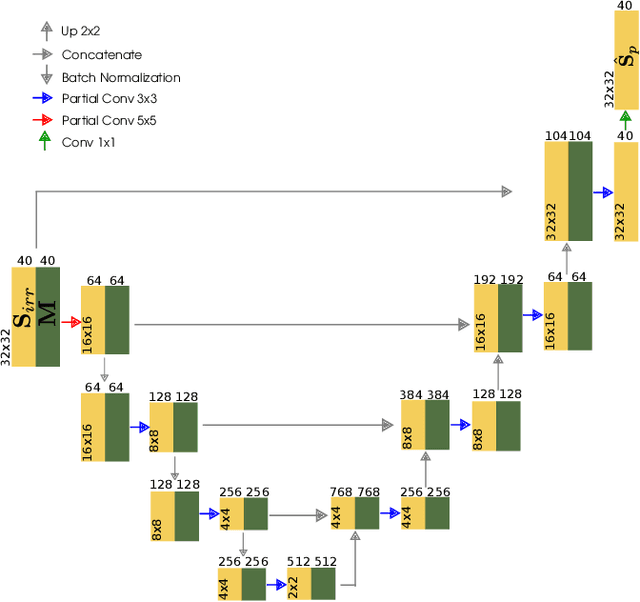
Abstract:In this paper a deep-learning-based method for sound field reconstruction is proposed. It is shown the possibility to reconstruct the magnitude of the sound pressure in the frequency band 30-300 Hz for an entire room by using a very low number of irregularly distributed microphones arbitrarily arranged. In particular, the presented approach uses a limited number of arbitrary discrete measurements of the magnitude of the sound field pressure in order to extrapolate this field to a higher-resolution grid of discrete points in space with a low computational complexity. The method is based on a U-net-like neural network with partial convolutions trained solely on simulated data, i.e. the dataset is constructed from numerical simulations of the Green's function across thousands of common rectangular rooms. Although extensible to three dimensions, the method focuses on reconstructing a two-dimensional plane of the room from measurements of the three-dimensional sound field. Experiments using simulated data together with an experimental validation in a real listening room are shown. The results suggest a performance---in terms of mean squared error and structural similarity---which may exceed conventional reconstruction techniques for a low number of microphones and computational requirements.
 Add to Chrome
Add to Chrome Add to Firefox
Add to Firefox Add to Edge
Add to Edge